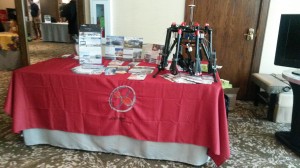What’s the biggest barrier to organizations launching an effective major donor program?
My three nominees are:
• Lack of connections
• Lack of time
• Lack of skills
Let’s discuss each in turn.
Connections: Most people I talk to feel their biggest barrier is lack of connections. In my experience, this is not the case. When run through an exercise to identify who they have as acquaintances, nearly everyone I’ve worked with discovers major donor prospects ($1,000+) in their midst. More importantly, if conceived of as a program and not a one-time effort, everyone knows people who, in turn, know major donor prospects at even higher levels of potential. Part of an effective major donor program is identifying the “connectors” you know, securing their donations (even if at lower dollar levels), and then enlisting them in the effort.
Skills: Others come to me feeling their biggest barrier is lack of skills. This is, of course, a real barrier. Partly because lack of skills can lead you to use the wrong approach to meetings, leading to fewer and smaller gifts. And partly because the lack of skills can sap you of the confidence necessary to build an effective program. The good news: there are techniques anyone can use that will allow them to improve their success rate when talking to prospects.
Time: Lack of time is, in the end, the barrier that I find leads many organizations to fare poorly when it comes to launching an effective major donor fundraising program. It takes time. Especially at the start. You can’t launch a major donor program with a stable staff without clearly identifying what you’re going to do less of because time is going into major donor cultivation and solicitation. Even if you’re adding staff who will take the lead with major donors, you need to still identify the time needed by others in the organization and account for how it will be allocated — especially for Executive Directors who are essential to major donor fundraising.
Time is also a big challenge for programs that aim to take advantage of the board’s connections and passion. The best board member on paper isn’t all that helpful if he or she lacks the time to commit to helping an organization. This should be a major part of the conversation with potential board members in recruitment and organizations should overstate rather than understate the time requirements of serving on the board so as to maximize the number of new board members who can truly fulfill their role.





